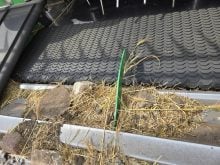The numbers speak for themselves.
Canada has roughly 6.9 million tonnes of high quality durum available to sell in 2009-10.
The total global demand for high quality durum ranges from three to 3.6 million tonnes a year.
That means Canada has roughly twice as much high quality durum on hand as the world wants to buy.
It leaves the Canadian Wheat Board with a marketing dilemma.
Should it sell No. 1 and 2 CW amber durum just to high quality buyers at high prices and carry over the resulting surplus stocks into 2010-11?
Read Also

Working groups established to address challenges in the containerized and bulk movement of commodities
CN is working with the pulse and special crops sector on resolving challenges in shipping those commodities.
Or should it judiciously sell some of the 1 and 2 into lower quality, lower priced markets to provide more grain movement and cash flow for durum producers?
“It’s a balancing act that we’re trying to do between price and volume,” said Bruce Burnett, the CWB’s director of market analysis.
“There is a tradeoff as we try to maximize market share, and to find additional demand, you have to go to some other markets that use durum for feed or blending.”
The 2009 durum crop was 5.4 million tonnes, of which 80 percent, or roughly 4.2 million tonnes, fell into the two top grades. (The long-term average is about 55 percent No. 1 and 2.)
About 1.5 million tonnes of the 2008-09 ending stocks were No. 1 and 2, resulting in total supplies of the top two grades of around 6.9 million tonnes.
Contract calls for durum are at 40 percent, compared with 80 percent for high quality red spring wheat.
Burnett said there will be additional delivery calls as the year progresses.
“We’re looking at least another 10 to 20 percent for all grades, but that could go up if market opportunities arise,” he said.
The board’s latest Pool Return Outlook for durum shows a spread of about $17 a tonne, between No. 2 and 3 CW amber durum.
Total world demand for durum this year is expected to be about seven million tonnes, with slightly less than half of that high quality.
There is strong demand for lower quality, as some less discerning customers will blend it with high quality to produce an acceptable durum or couscous. Lower quality durum is also blended with milling wheat to produce flatbreads such as chapatis.
Asked specifically whether the board will sell high quality durum into lower price markets, Burnett said the agency is considering all sorts of things, and that’s one of them.
“We’re looking at trying to capture as much of the durum demand as is feasible under a reasonable price structure,” he said.
“To find additional demand for your product, you have to go to some other markets that use durum for feed or blending. It’s about maximizing sales, given the mix of products we have and the global demand.”
He added that if the board sold some higher quality product into lower quality markets, it could extract a premium above the lower grade price.
Farmers who grow durum on a regular basis are used to the ups and downs of the market, he added.
It’s a relatively small volume crop at around 30 to 40 million tonnes annually and prices can vary widely from year to year depending on production in the importing and exporting countries.
“It’s like growing any other specialty crop,” said Burnett.
Supply and demand
All figures are in tonnes
- 2007-08: Production 3.7 million, total supply 4.9 million, exports 3.2 million, carryout stocks 819,000
- 2008-09: Production 5.5 million, total supply 6.3 million, exports 3.6 million, carryout stocks 1.9 million
- 2009-10 (estimate): Production 5.4 million, total supply 7.4 million, exports 3.7 million, carryout stocks 2.7 million.














